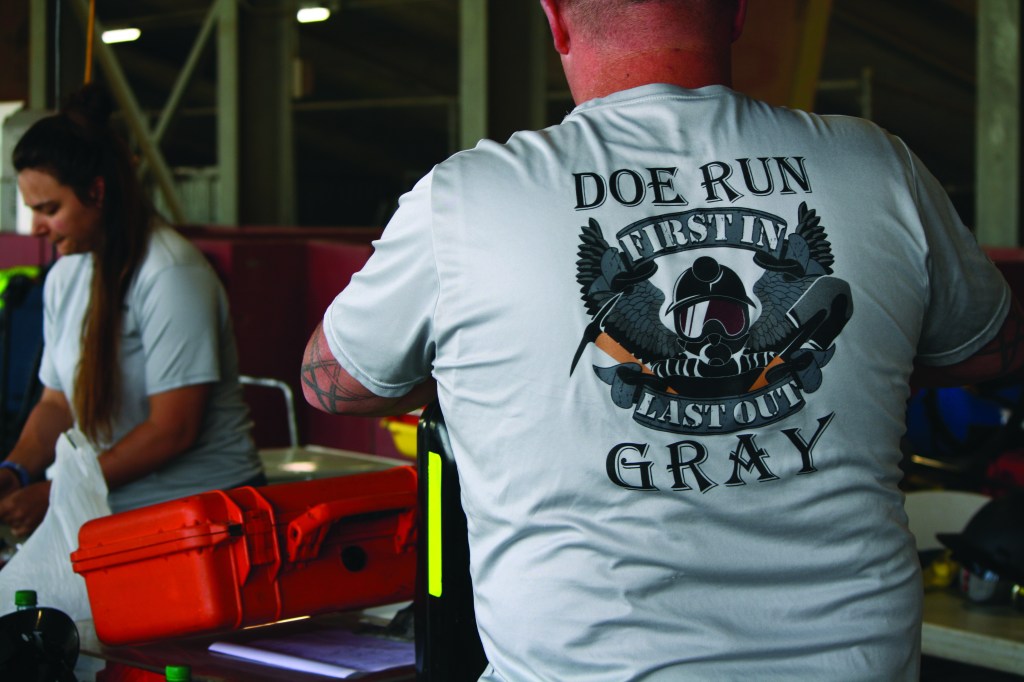Mine Rescue: A competition that saves lives
Published 2:15 am Saturday, May 13, 2023

- Missouri's Doe Run Gray team checking their equipment in preparation of their field run/
The Southern Regional Mine Rescue Association held its 50th annual regional Mine Rescue Competition over the past week. It is the oldest and longest running regional Mine Rescue Competition in the nation.
Landon Olivier, team trainer for the Week’s Island Morton Salt Mine rescue team and vice president of the Southern Regional Mine Rescue Association, described mine rescue as a team of individuals made up of firefighters, emergency responders, ventilation experts and engineers that work on a mining site.
Of the 16 teams that participated in the competition, four were local and the rest came from different states around the country. Three teams each came from Wyoming and Missouri, one from Tennessee, one from New Mexico, one from Illinois and two from Nevada. Each team represented a company, with some of them splitting into multiple teams.
Mine rescue teams rely entirely on themselves, according to Mike Plateka, who has worked with the mine rescue competition for 25 years. Traditional firefighters and emergency response teams don’t have the training or equipment necessary to be effective in a mine disaster. This self-reliance created an unshakable community amongst mine rescue teams.
“The friendships I have, it’s bittersweet, because I can go anywhere in the country and make a telephone call and if I’m in trouble, I can get help. If you talk to any of the veterans around here, this is family. It isn’t just work, this is family,” Plateka said.
The Nevada-based Turquoise Ridge won first overall, with Tennessee-based Carmeuse Luttrell Rangers coming in second and the Wyoming-based Siescam team taking home third. The Week’s Island Morton Salt team won the travelling trophy for their extensive efforts.
Teams competed in four different individual categories: the field competition, the benchman competition, the first aid competition and the the team technician competition. Each of these competitions reflect different aspects a team’s will have in a mine catastrophe.
Paul Boutte, captain of the Compass team “Bayou Beast Blue”, said the “problem” in the field test changes every year, and it ensures mine rescue teams are fully prepared for the diverse disasters they encounter.
“It’s a good competition this year. The problem is a good problem. You know, it prepares us for what we don’t want to do. You know, hopefully we never have to use our skills, but we have the skills if we do,” Boutte said.
The field competition covers the practical application of rescue techniques. Every year, the Mine Safety and Health Administration (MSHA) steps in and creates a simulated scenario in which teams are required to respond in a limited period of time.
The benchman competition involves breaking down the rebreathers that mine rescue teams use and reassembling them to ensure they function correctly. Traditional oxygen systems used in firefighting can last up to an hour because they simply breathe from a tank. The masks used by mine rescue teams are called rebreathers as they recycle exhaled air into oxygen and can last up to 4 hours.
The first aid competition utilizes volunteers as victims to measure a mine rescue team medical response to stabilizing a casualty. It involves the steps for CPR and checking a victim’s condition. Afterwards, teams are tasked with securing and moving them.
The team technician competition analyzes a team’s capacity for calculations and calibration. Mining involves various potentially deadly gasses which changed depending on the mined material so teams use gas detection devices to find gas pockets. Because they are different, the teams must know how to calibrate the device for the specific gas they are trying to find. After identifying the gas, they have to ventilate it using calculations for air flow and pressure.





